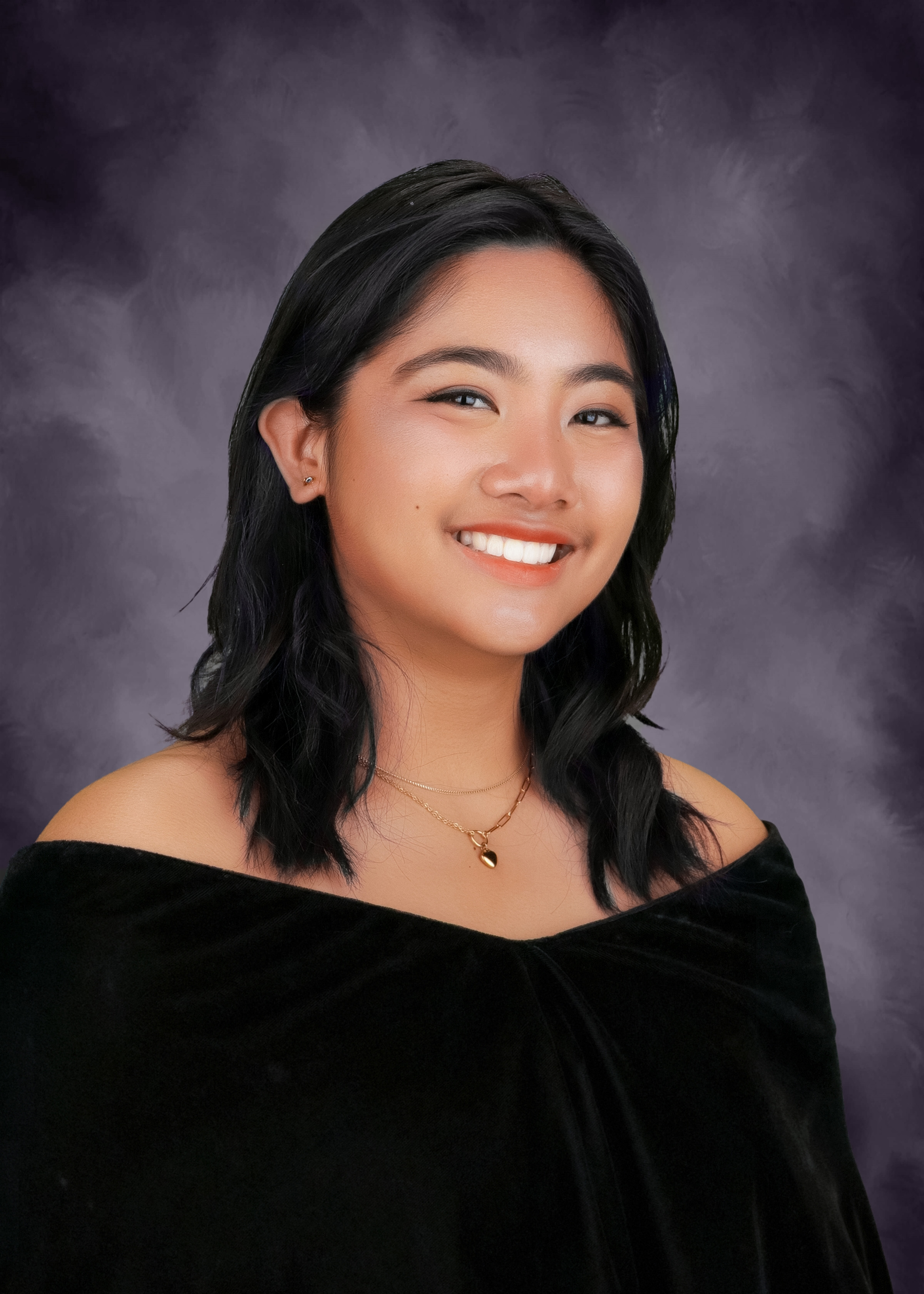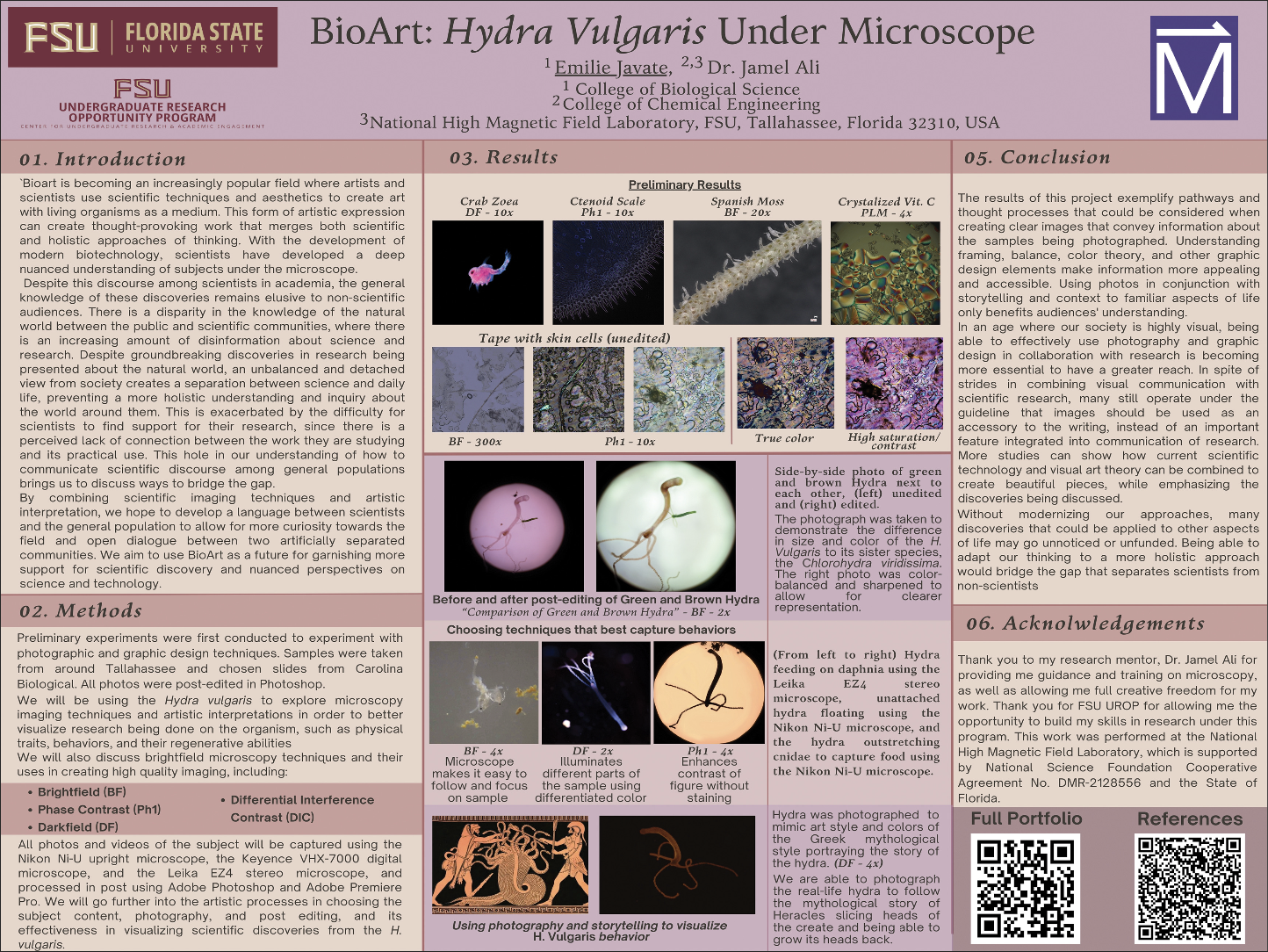Research Symposium
25th annual Undergraduate Research Symposium, April 1, 2025
Emilie Javate Poster Session 4: 3:00 pm - 4:00 pm/ Poster #69

BIO
Emilie Javate is an undergraduate researcher from St. Petersburg, Florida, majoring in Biological Science. Their research explores bright-field microscopy imaging techniques to photograph Hydra vulgaris while examining the intersection of science and art. Through this work, they highlight the importance of modernizing educational approaches to make scientific discoveries more accessible to the public. Emilie has integrated photography and graphic design into their study, learning essential design elements to capture and edit striking images of Hydra. Their work not only enhances scientific documentation but also fosters a deeper appreciation for the beauty of microscopic life.
BioArt: Hydra Vulgaris Under Microscope
Authors: Emilie Javate, Dr. Jamel AliStudent Major: Biological Science
Mentor: Dr. Jamel Ali
Mentor's Department: Chemical Engineering Mentor's College: FAMU-FSU Co-Presenters:
Abstract
Strong communication is integral to sparking interest in research and creating broad discourse on scientific subjects. However, complex language in academia and detachment from everyday life can isolate non-scientists from scientific discoveries, despite the potential of creative ways the public can interact with discourse in scientific communities. Advancements in expressions like BioArt can allow the public to visualize complexities in the natural world and encourage a bridge between social and philosophical thinking with scientific inquiry.
Using various microscopic bright-field imaging techniques and creative tools like PhotoShop, seemingly abstract discoveries may be recontextualized into approachable and visually digestible pieces. We photographed the visually striking Hydra vulgaris, named after its incredible regenerative abilities similar to the mythical being it is named after. It was used as a model for how artistic interpretation can create visual stories that help establish biological concepts, such as tissue regeneration, in a more compelling way.
Ultimately, we question how BioArt can serve both as a tool for inspiring scientific discourse among non-scientific audiences and bridge humanitarian approaches of thinking into scientific research. There is a gap in this understanding due to a lack of emphasis on making scientific discovery more accessible outside of scientific communities, as well as science and other disciplines historically being separated in public perception. We will also be including a discussion of the implications of bridging the gap between science and art and the future of creating art using living organisms.
Keywords: BioArt, Hydra, Microscopy


